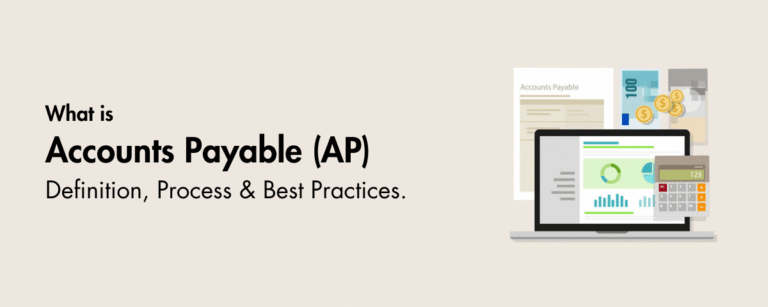Because this guide lives on Accountably.com, a quick note for context. Many U.S. firms ask our team to help with bank recs during busy seasons or audits. We work under IRS compliance, GAAP, cash basis reporting, and SOC‑2 certified processes, so our examples here match what your auditors expect, and what your clients rely on.
Table of Contents
- Key Takeaways
- What Bank Reconciliation Is and Why It Matters
- Definition and Purpose, In Plain Language
- Core Concepts You Will Use Every Time
- How Bank Reconciliation Works Step by Step
- Best Practices, Controls, and Avoiding Mistakes
- Example Bank Reconciliation Statement
- Quick Bank Reconciliation Checklist
- Frequently Asked Questions
- When To Ask For Help
- Conclusion
Key Takeaways
- Bank reconciliation compares your bank statement to your GL cash account, then explains every difference until both adjusted balances agree.
- You adjust for timing differences on the bank side, such as deposits in transit and outstanding checks, and you record bank‑only items on the books, such as bank fees, interest, and NSF returns.
- The outcome is one adjusted cash balance, a clean audit trail, and stronger controls that catch errors and fraud fast.
- Reconcile at least monthly, and move to weekly or daily for high‑volume or sensitive accounts.
- Use a documented process, approvals, and saved workpapers, this keeps you audit ready.
What Bank Reconciliation Is and Why It Matters
Bank reconciliation is the process of matching the activity and ending balance on your bank statement to the cash balance in your general ledger, then documenting and posting the items that caused a difference. The usual suspects are deposits in transit, outstanding checks, bank service charges, interest, and NSF checks. You tick items that match, adjust the bank side for timing, record bank‑only items to the books, and keep going until both adjusted balances match.
Why it matters, cash is the account most at risk, and even small mistakes compound. A duplicate payment, a forgotten service charge, or a transposed deposit can skew cash forecasts, tax estimates, and covenant reporting. A strong reconciliation catches those problems quickly, creates a paper trail that auditors respect, and gives you confidence to make decisions.
Definition and Purpose, In Plain Language
You have two sources that tell a cash story, the bank and your books. They will rarely match at first glance. Bank reconciliation is the formal way to compare them and explain why they differ. The purpose is simple.
- Verify that every bank transaction is recorded correctly in your GL.
- Record items that only the bank knew about, for example fees, interest, chargebacks, and NSF items.
- Identify timing gaps, for example deposits you recorded that have not cleared yet, or checks you issued that the bank has not paid yet.
- Detect errors and unauthorized activity early, then fix them before they ripple into reports.
A good reconciliation is not just a checklist, it is proof that your cash story is complete, accurate, and ready for scrutiny.
Core Concepts You Will Use Every Time
Reconciling Items
- Deposits in transit, you recorded the receipt, the bank will show it next day.
- Outstanding checks, you recorded the payment, the bank will clear it later.
- Bank fees and interest, the bank recorded them first, you add them to the books.
- NSF checks, the bank reversed a customer payment, you must reverse and re‑collect.
- Errors, duplicates, missing entries, or transposed amounts, you correct these with journal entries.
Adjusted Bank and Book Balances
You adjust the bank balance for timing differences, deposits in transit and outstanding checks. You adjust the book balance for bank‑only items, fees, interest, NSF, and for bookkeeping errors. When you finish, the adjusted bank balance and the adjusted book balance must match. If they do not, there is still a difference to find.
Documentation and Audit Readiness
Save the bank statement, your marked‑off copy, the reconciliation statement, supporting deposit slips, copies of checks, and the journal entries you posted. Add dates, preparer, and reviewer sign‑offs. This creates a defensible audit trail and strengthens internal control, which is exactly what reviewers and auditors look for.
Note, this article is for general information and education. It is not tax or accounting advice for your specific situation. If you need hands‑on help, use a qualified accounting professional. Accountably supports U.S. firms with white‑label, audit‑ready back office work, including bank reconciliation, and we do it within GAAP and IRS rules with SOC‑2 certified processes when you need capacity coverage.
How Bank Reconciliation Works Step by Step
You can run a clean bank reconciliation with the same playbook each month. Here is a practical process you can follow and teach to your team.
- Gather documents
- Bank statement for the period, including check images if available.
- GL cash account detail, deposit logs, and check registers.
- Any bank feed exceptions and prior month reconciling items.
- Start with ending balances
- Note the ending balance on the bank statement.
- Note the ending balance on your GL cash account.
- Tick and tie transactions
- Match deposits, wire receipts, ACH credits, and card settlements to the GL.
- Match checks, ACH debits, wires, and fees to the GL.
- Mark everything that matches, then set aside any items that do not.
- Identify timing differences
- List deposits in transit that have not appeared on the bank statement.
- List outstanding checks that have not cleared the bank.
- Record bank‑only items on the books
- Post journal entries for bank fees, interest income, NSF returns, and chargebacks.
- Correct duplicates, omissions, and transposed amounts you find during the match.
- Compute adjusted balances
- Adjust the bank balance for timing differences.
- Adjust the book balance for bank‑only items and corrections.
- Both adjusted balances must equal, if not, investigate the remaining difference.
- Prepare and file the reconciliation
- Create a one‑page reconciliation statement that shows the starting balances, every reconciling item with dates and amounts, and the final adjusted cash balance.
- Include preparer and reviewer names and dates, then file with the month’s workpapers.
Tip, train your team to chase the oldest reconciling items first. A stale deposit in transit or a months‑old outstanding check usually hides the real problem.
What You Need On Your Desk
- Bank statement, the PDF plus images for checks and deposits when available.
- Cash GL detail, for the same date range as the bank statement.
- Deposit slips and daily sales summaries for cash‑heavy businesses.
- Check register and AP detail for issued checks and electronic payments.
- Exception report from your accounting software, unmatched or uncategorized items.
Common Reconciling Items You Will Record
- Bank service charges and card processing fees.
- Interest income on operating or sweep accounts.
- NSF returns and chargebacks, along with the re‑debit when the customer repays.
- Corrections for duplicates, missing entries, and transposed digits.
- Bank errors, rare, yet they happen, record and request the bank’s correction.
How Often To Reconcile
- Monthly, the default for most small to mid sized firms.
- Weekly, if you process high volumes, manage thin cash, or face fraud risk.
- Daily, for card‑heavy retail, payroll clearing accounts, or funding events.
- Immediately, when suspicious activity appears, document and escalate.
Frequency Quick Guide
| Situation | Recommended cadence | Reason |
| Standard operating account | Monthly | Align to close, keep audit trail current |
| High‑volume receipts | Weekly | Catch errors and NSF quickly |
| Payroll clearing | Daily or weekly | Control cash swing and confirm wires |
| Funding or audit prep | Daily | Prove balance for diligence and auditors |
| Suspected fraud | Immediate | Shorten the dispute window |
If you are expanding capacity, you can keep the process in house and add automation, or you can assign the work with a white‑label partner. Some firms ask Accountably to prepare reconciliations, then their managers review and post entries. That split keeps reviewers focused on oversight, budgets, and advisory work.
Best Practices, Controls, and Avoiding Mistakes
Strong reconciliation discipline starts with cadence, clear roles, and simple evidence that anyone can review. Use this list to keep quality high.
- Lock a schedule, reconcile on a fixed day after statements arrive.
- Separate duties when possible, preparer and reviewer should be different people.
- Tie the opening balance to last month’s adjusted balance before you start.
- Clear timing differences quickly, stale items often mask missing entries.
- Keep a central exceptions list, chase oldest items first, then new ones.
- Save all workpapers, statements, images, and journal entries in one folder.
Small habit, big payoff, circle anything older than 30 days on your recon. Ask why it is still there. Most lingering items point to a process gap you can fix.
Controls That Auditors Expect
- Preparer and reviewer sign‑offs with dates.
- Evidence of matching, marked statements or system match reports.
- A listing of reconciling items with dates, amounts, and references.
- Proof that journal entries were posted and approved.
- Retention of workpapers, typically by period and account.
Common Pitfalls and How To Fix Them
- Posting the bank balance to the GL, this hides real variances, fix the source entry instead.
- Ignoring small fees, small amounts compound, post them each period.
- Letting deposits in transit linger, investigate daily sales cutoffs and deposit timing.
- Overlooking duplicate payments, review vendors with two checks for the same invoice.
- Not reviewing voids and reversals, confirm both sides of the entry were handled.
Manual, Automated, or Hybrid
Automation speeds up matching, humans still decide and document exceptions. Pick what fits your team and your clients.
| Method | Strengths | Watchouts | Best for |
| Manual | Full visibility, easy to start | Time heavy, error risk on data entry | Low volume or complex edge cases |
| Automated | Fast matching, clear audit logs | Needs clean data and rules | Medium to high volume with standard flows |
| Hybrid | Automation for matching, humans for review | Process design matters | Most firms that want scale and control |
Multi‑Entity and Multi‑Bank Tips
- Standardize the template, same columns, same sign‑offs, across all entities.
- Map bank IDs and GL account numbers consistently, avoid name confusion.
- Use separate staff or time blocks per entity, reduce cross posting risk.
- Lock a cutoff policy for deposits and cash sales, keep it consistent each month.
Security and confidentiality matter when you handle cash data. If you use outside support, confirm controls for data access, file transfer, and retention. Accountably operates with SOC‑2 certified processes, and teams trained on IRS and GAAP requirements, which is why firms trust us during audits, peaks, and multi‑state work. Mentioning it once here is enough, the goal is to reinforce trust without distracting from the how‑to.
Example Bank Reconciliation Statement
Here is a simple example that ties the bank and the books to the same adjusted number.
Period Summary
- Bank statement ending balance, $106,800
- Book balance per GL, $120,000
Adjust the Bank Side for Timing
- Add deposits in transit, $13,000
- Subtract outstanding checks, $0 shown here to match the example
Adjusted bank balance, $119,800
Adjust the Book Side for Bank‑Only Items
- Subtract bank service charges, $200
- Add interest income, $0 in this example
- Reverse NSF checks, $0 in this example
Adjusted book balance, $119,800
Both sides now match. File the one‑page reconciliation statement with the bank statement, deposit slips, check images, and posted journal entries. If anything remains unmatched, keep investigating until there is no unexplained difference.
One‑Page Reconciliation Template
Copy this structure into your month‑end binder.
| Item | Reference | Date | Amount | Bank Side | Book Side | Notes |
| Ending balance | Statement page | 2025‑09‑30 | 106,800 | 120,000 | Per bank and GL | |
| Deposits in transit | Deposit log | 2025‑09‑30 | 13,000 | + | Will clear next day | |
| Outstanding checks | Check reg | 0 | − | None in example | ||
| Bank fees | Bank memo | 2025‑09‑29 | 200 | − | Post JE to expense | |
| Interest income | Bank memo | 0 | + | Post JE if any | ||
| NSF returns | Bank memo | 0 | − | Rebill customer | ||
| Adjusted balance | Tie‑out | 2025‑09‑30 | 119,800 | 119,800 | Must match |
Quick Bank Reconciliation Checklist
- Match opening balances to last month’s adjusted cash.
- Tick and tie deposits, receipts, checks, and withdrawals.
- List deposits in transit and outstanding checks with dates.
- Post bank fees, interest, and NSF items to the GL.
- Correct duplicates, omissions, and transposed entries.
- Recompute adjusted balances, bank and book must match.
- Add preparer and reviewer sign‑offs, then file workpapers.
Frequently Asked Questions
What is meant by bank reconciliation
It is the process of matching your bank statement to your GL cash account, then explaining and recording every difference until both adjusted balances match. You document timing gaps, record bank‑only items, correct errors, and keep the evidence for audits and reviews.
What are the three methods of bank reconciliation
Firms use manual, automated, or hybrid methods. Manual gives full visibility but takes time, automated speeds matching when rules are clean, and hybrid uses automation for the easy work and humans for exceptions and review.
How do you do a bank reconciliation
Gather the bank statement and GL, match transactions, list timing differences, post bank fees, interest, and NSF items, then correct any errors. Compute adjusted balances on both sides, they must be equal, and file the reconciliation with sign‑offs and support.
What is reconciliation in simple words
You compare two records that should tell the same story, then fix the parts that do not line up. For cash, that means checking bank activity against your books, posting missing items, and confirming the final number matches on both sides.
How often should we reconcile
At least monthly for most operating accounts, weekly or daily for high‑volume or sensitive accounts, and immediately when you see suspicious activity. Faster cadence shortens the time it takes to catch problems and recover funds.
When To Ask For Help
If your team is buried at month end, if reconciliations lag during tax season, or if you need extra hands before an audit, outside help can keep you on schedule without lowering the bar. Accountably supports CPA firms, EAs, and accounting practices with white‑label reconciliation and back‑office work. We operate under IRS compliance, GAAP standards, cash basis reporting, and SOC‑2 certified processes, so you can scale without losing control.
Ready to reduce backlog and keep every account audit ready, talk to our team about reconciliation support and a simple rollout plan.
Conclusion
Bank reconciliation proves that your cash story is accurate. You start with two different balances, you explain every difference, you post what is missing, and you confirm the final number matches on both sides. That discipline protects cash, prevents surprises, and gives you confidence in every close and every audit. Keep the process simple, keep the cadence steady, and keep the evidence tidy. Your future self will thank you at quarter end.








